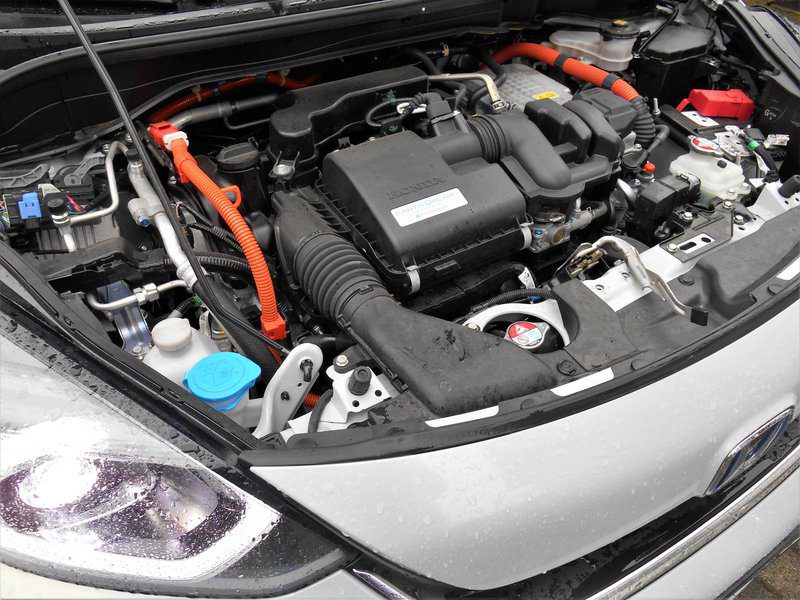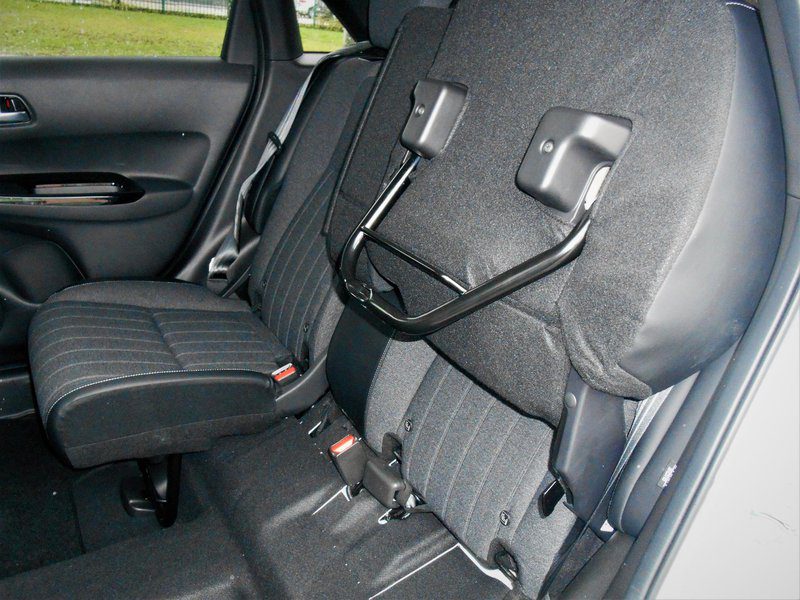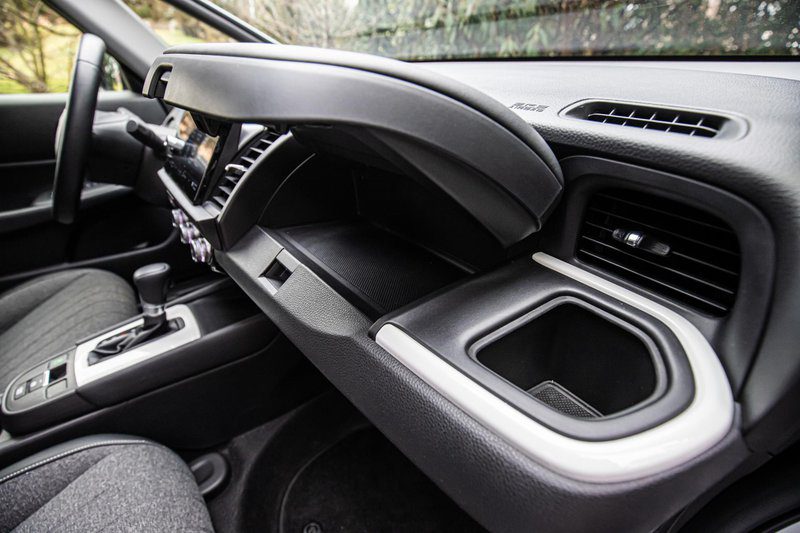
Test: Honda Jazz 1.5i-MMD Hybrid Executive (2021) // Unsung melody
Content
From a statistical and economic point of view, the Jazz is a very serious car: this year marks 20 years since the introduction of the first generation, the number of customers is approaching eight million, and we are actually dealing with a worldwide hit. So, partly because of its popularity, it deserves at least a cursory glance in the rearview mirror focused on history. The first Jazz was unveiled at the 2001 Tokyo Auto Show, and even the most critical of automotive journalists were a little bewildered.while buyers of compact four-wheelers with a one-room design quickly embraced it as their own.
Jazz entered the automotive world with Honda's good reputation for quality and engineering excellence, and then over the generations it solidified its name mainly through content updates. By the way, it was one of the first cars in its class with two airbags and a standard anti-lock braking system. And in all generations, the so-called magic rear seats appear. (Honda Magic Seats), which also allow higher loads to be carried by folding and lifting in a cinematic style. In addition, Jazz has received a number of recognitions and awards around the world, many of which were voted on by customers.

Return to the present. Interestingly, Honda chose to be faithful to the original body style and therefore retained the single-seater design in the new Jazz, rather than obeying the fashion principles that are also used for off-road urban crossovers in this size class. For this, the Crosstar version goes along with the usual Jazz, but this is already the story of a slightly different car.... Jazz belongs to an almost extinct class that is lacking in many families due to its spaciousness, ease of use and practicality, regardless of whether it had the status of the first or second machine. And modern hybrids have more aesthetics and less content than minivans.
Above average gray capacity
For all four generations, Jazz has not undergone revolutionary changes in design, but has somehow grown organically along with fashion teams and user needs. Again, the stylists did nothing to compromise visibility. Compared to its predecessor, the body lines are a little more rounded and the LED headlights are joyfully bulging. The hood and grille give the impression of two different cars, and most surprisingly, the large glass surfaces.... In addition to the large windscreen, the two side windows on the thin A-pillars provide good visibility from the inside.

With an outer length of just over four meters, the almost exclusive use of passenger compartment space, which is actually constant for this Honda car, is also surprising. The wide-angle doors make it fairly easy to get in, and due to its relatively high seating position, the Jazz has always been popular with even more adventurous drivers and those who already have back problems without the fall of life.
But if at all, jazz is now developed young enough for the younger generation to look up to. The front seats are well proportioned and comfortable, and provide ample traction, only taller drivers will miss an inch of longitudinal movement. Well, there are no such problems in the back, there is enough space for two passengers in all directions, but when a third enters between them, the width begins to end.of course depends on how much you have on your shoulder. As I mentioned earlier, the split back bench has a magical folding function, and I was tempted to bring my mother-in-law some luxurious tree pot just to test space comfort, not to get points.

The space marvel was created by Honda engineers by moving the fuel tank under the front seats to get depth that continues in the trunk. It is a few liters less in volume than its predecessor, but is still very durable for this size class, and there are also some useful storage spaces.
Only with electricity
Honda is slowly saying goodbye to combustion engines. They ditched diesel powertrains at first, they just put an electric toddler on the road, and they already have miles with hybrid powertrains. The Jazz is a relatively complex hybrid system, consisting of a four-cylinder petrol engine and two electric motors, similar to the CR-V SUV.... Somehow I was not able to figure out what exactly the e-HEV tag on the back means, but it definitely has to do with electricity and hybrid driving.
The main electric motor, which does most of the work, makes a decisive contribution to relatively sovereign acceleration, satisfactory cruising speed and, of course, lower gas mileage. The 1,5-liter petrol engine, which is not helped by forced refueling, is activated in the drive mainly when the driver puts more pressure on the accelerator pedal, and only at a certain speed (a special clutch takes care of the mechanical connection to the engine wheels). Also another electric motor, whose task is to supply electricity for movement on electricity, which it generates as a generator and charges a lithium-ion battery (which, in turn, drives an electric motor).
The inline four-cylinder engine operates on the Atkinson cycle principle, which increases thermal efficiency, but still has a very short peak torque as it only pulls best in the 4.500 to 5.000 rpm range.... Accelerating faster to highway speeds increases the revs slightly to the jazzy accompaniment of engine noise, and then decreases, as if the torque were transmitted through a multi-speed transmission.
But this is just a gimmick to create the feeling that the driver has everything under control. Because this car does not have a gearbox, since the electric motor does not need it, and the thermal one can drive the wheels directly only at the ideal speed, and the clutch is electronically controlled by an electronically controlled unit. Of course, the increase and decrease in engine speed is due to the electronics, which simply determines how much electricity the electric motor needs to power the car.

So I have no choice but to engage in smart electronic brains while driving, which determines for itself whether the car will be powered by electricity, gasoline, or a combination of both. With only electricity from a modest battery, you can drive several hundred meters, of course, depending on driver dynamics, driving conditions, ambient temperature and road configuration. The transitions between the individual modes are smooth and barely perceptible, which, in addition to being inaudible in the electric mode, I consider a big plus.... This is more than a minus, which I attribute to the annoyingly loud operation of the gasoline engine during acceleration.
The hybrid drivetrain proves to be most economical in urban environments, where the four-cylinder petrol engine is the least involved in turning the wheels and petrol thirst can be quenched. drops significantly below the average of 5,1 liters per 100 km recorded on our measurement chart.... That's half a liter more than Honda claims, but it's a very good achievement nonetheless. But at the same time, consumption increases almost unjustifiably when driving on the highway, so I wonder why the electric motor assistance does not appear more at higher speeds, or why Honda did not tune the control electronics differently.
Of course, the Jazz is not one of those cars in which you will drive through corners with adrenaline, as it reacts somewhat hesitantly to sudden changes in direction, as if trying to tell the driver to be careful with the accelerator pedal and the gas pedal. steering wheel. Such sensations are not even surprising, since this is a car with a slightly taller body and a higher center of gravity, which is reflected in a more noticeable body tilt. By this, of course, I do not mean that at the wheel I had doubts about the reliability of the contact of the wheels with the ground; In addition, I must point out the brakes that work effectively even on slippery surfaces.
Digitization with pros and cons
In fact, in the driver's seat, I expected nothing but a digital instrument panel and a large central communications screen. It features crystal-clear graphics, the selectors are also available in Slovenian, and the entire infotainment system works logically and above all is responsive. This also applies to connectivity applications.
This is a little different from the instruments in front of the driver's eyes, where the view can capture a lot of information, which, unfortunately, is organized without the necessary hierarchy and, accordingly, is unclear. This is especially true for tweaking the operation of some assistance systems, among which I will note the lane departure control manager, who nervously intervenes, roughly shaking the steering wheel.
I love that the A / C controls remain mechanical, as they are less distracting from the road than viewing digital dials.. The overall look of the interior is a mixture of modern interior architecture, minimalist design, mostly quality materials (with the exception of the plastic in most of the dashboard) and precision workmanship. The only element that, from a design point of view, does not fit into the whole future-oriented concept is the gear lever. Like I took it from Jazz two generations ago!

It amazes me that the slant-eyed interior architects have not managed to collect any more aesthetic levers. The sound quality of the radio system, which I tested while pampering the ear with some modern instrumental jazz, is also encouraging. I must admit that it was quite consistent with the character of the car.
In its latest guise, the Jazz truly embodies what we would normally expect from a car: flexibility and usability, a van in the form of a small one-seater sedan, ease of use and ease of use, and versatility suitable for city driving or walking on vacation. Honda has developed a thoughtful and well-balanced concept that can be at least an equivalent alternative to smaller SUVs. To be honest, nothing would be more boring in life without them.
So jazz is like a timeless unsung melody with jazz or some other melody, but unfortunately at a salty or outrageously high price. About 26 thousand for the most equipped version is definitely a lot.
Honda Jazz 1.5i-MMD Hybrid Executive (2021)
Basic data
| Sales: | AC Mobile doo |
|---|---|
| Test model cost: | 25.990 € |
| Base model price with discounts: | 21.990 € |
| Test model price discount: | 25.990 € |
| Power: | 80kW (109 KM) |
| Acceleration (0-100 km / h): | 10,2 with |
| Maximum speed: | 175 km / h |
| Mixed flow ECE: | 4,6l / 100km |
| Guarantee: | General warranty 3 years or 100.000 km, 12 years for rust, 10 years for chassis corrosion, 5 years for battery. |
| Systematic review | 20.000 km / 12 |
Cost (up to 100.000 km or five years)
| Regular services, works, materials: | 1.058 € |
|---|---|
| Fuel: | 20.000 € |
| Tires (1) | 950 XNUMX € |
| Loss of value (within 5 years): | 18.377 XNUMX € |
| Compulsory insurance: | 3.480 XNUMX € |
| CASCO INSURANCE (+ B, K), AO, AO + | 6.990 XNUMX ( |
| Calculate the cost of auto insurance | |
| Buy up | € 35.955 0,36 (km cost: XNUMX) €) |
Technical information
| engine: | Engine: 4-cylinder, 4-stroke, in-line, petrol, transverse, displacement 1.498 cm3, maximum power 72 kW (97 hp) at 5.500–6.400 rpm – maximum torque 131 Nm at 4.500–5.000 rpm / min - 2 camshafts in the head (timing belt) - 4 valves per cylinder - fuel injection into the intake manifold. Electric motor: maximum power 80 kW (109 hp), maximum torque 253 Nm. |
|---|---|
| Battery: | Li-ion, np |
| Energy transfer: | front-wheel drive - continuously variable transmission eCVT - tires 185/55 R 16 V. |
| Capacity: | top speed 175 km/h - 0-100 km/h acceleration 9,4 s - average combined fuel consumption (WLTP) 4,6 l/100 km, CO2 emissions 104 g/km - electric range (ECE) np |
| Transportation and suspension: | limousine - 5 doors, 5 seats - self-supporting body - front single suspension, coil springs, three-spoke wishbones, stabilizer - rear axle shaft, coil springs, stabilizer - front disc brakes (forced cooling), rear disc brakes, ABS, electric parking brake rear wheels (switch between seats) - rack and pinion steering wheel, electric power steering, 2,4 turns between extreme points. |
| Mass: | empty vehicle 1.304 kg - permissible total weight 1.710 kg - permissible trailer weight with brake: np, without brake: np - permissible roof load: 35 kg. |
| External dimensions: | length 4.044 mm – width 1.694 mm, with mirrors 1.966 1.526 mm – height 2.517 mm – wheelbase 1.487 mm – track front 1.474 mm – rear 10,1 mm – ground clearance XNUMX m. |
| Inner dimensions: | longitudinal front 870-1.040 mm, rear 790-990 mm - front width 1.420 mm, rear 1.390 mm - head height front 940-1.040 mm, rear 900 mm - front seat length 500 mm, rear seat 480 mm - steering wheel ring diameter 370 mm - fuel tank 40 l. |
| Box: | 304-1.205 l |
Our measurements
| T = 3 ° C / p = 1.028 mbar / rel. vl. = 77% / Tires: Bridgestone Blizzak LM25 185/55 R 16 / Odometer status: 3.300 km | |
| Acceleration 0-100km: | 10,2 with |
|---|---|
| 402m from the city: | 17,2 years ( 135 km / h) |
| Fuel consumption according to the standard scheme: | 5,1 l / 100km |
| Braking distance at 130 km / h: | 70,1m |
| Braking distance at 100 km / h: | 41,2m |
| AM table: | 40,0m |
| Noise at 90 km / h | 61dB |
| Noise at 130 km / h | 66dB |
Overall rating (445/600)
At Honda, they had good enough reasons to keep the philosophy of previous generations, which they updated to the times and conditions with the help of modern technology. The only question that remains is when the Jazz will get an all-electric drive.
Cab and trunk (82/110)
The passenger compartment is surprisingly spacious and surpasses most competitors in the length class by about four meters.
Comfort (97
/ 115)Passengers are taken care of more than thoroughly, and well-held front seats can have a few extra inches of longitudinal offset.
Transmission (59
/ 80)The choice is limited to a sensible combination of four-cylinder petrol and two-cylinders, which ensures an economical driving experience.
Driving performance (72
/ 100)Taking into account the growth of the single-seater, the behavior on the road is quite expected, so this car does not cause an adrenaline rush.
Security (104/115)
Jazz is equipped with the most modern driver assistance systems to ensure safety and comfort, the dispatcher, in the event of an unintentional lane change, intervenes nervously and rudely.
Economy and environment (63
/ 80)The hybrid Jazz is more convincing with low gas mileage than greenhouse gas emissions.
Driving pleasure: 3/5
It is undoubtedly a vehicle that sets standards in its class. Sharp and precise, driving pleasure,
whenever you want, forgiving and everyday (for now) useful when taking a child to kindergarten or a woman to the cinema.
We praise and reproach
spaciousness of the passenger compartment
intelligent folding seats
transmission design
the accuracy of the driver's workplace
gasoline engine roar during acceleration
confusion and transparency on the driver screen
inconspicuous gear lever
unreasonably high price
